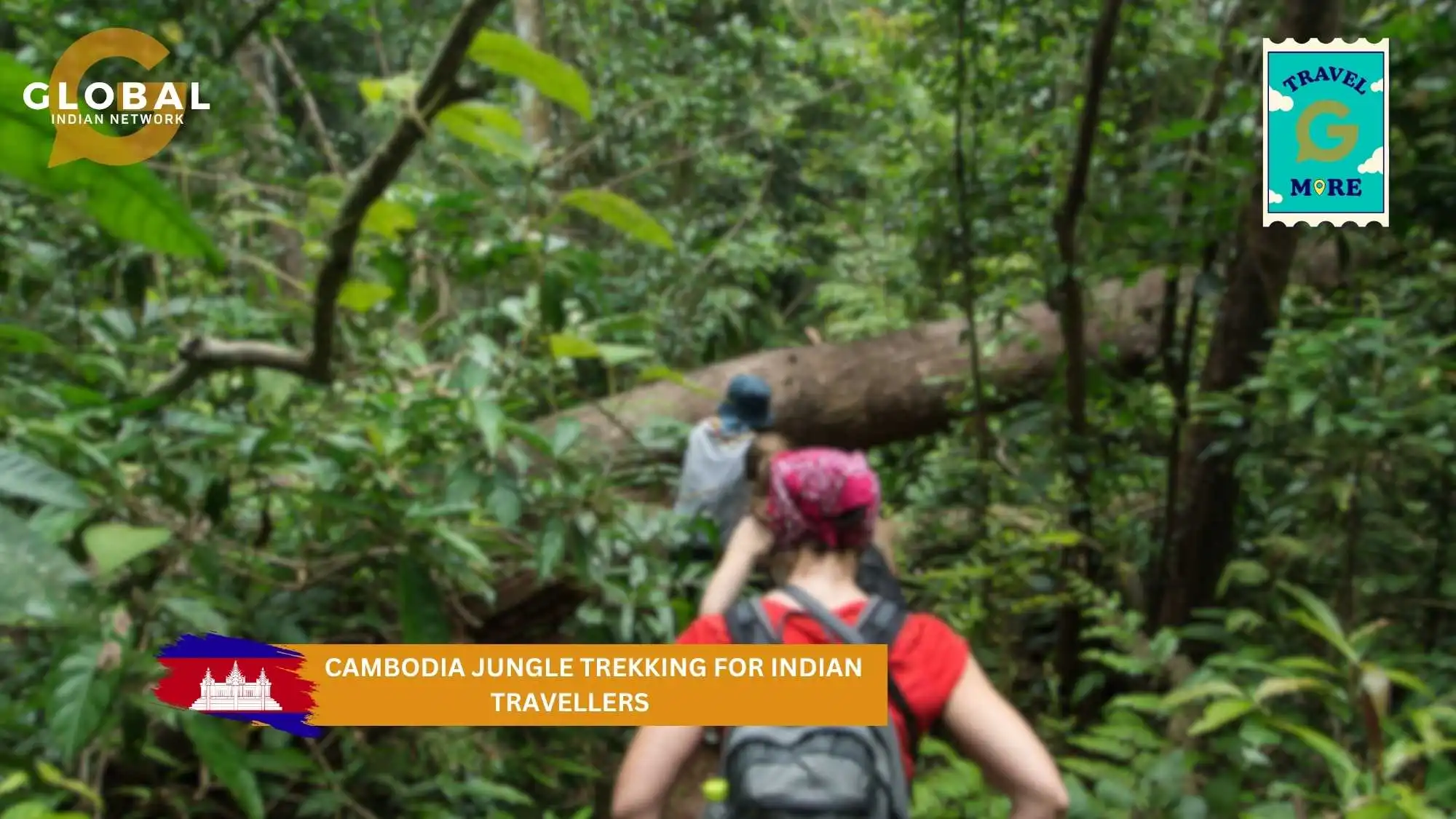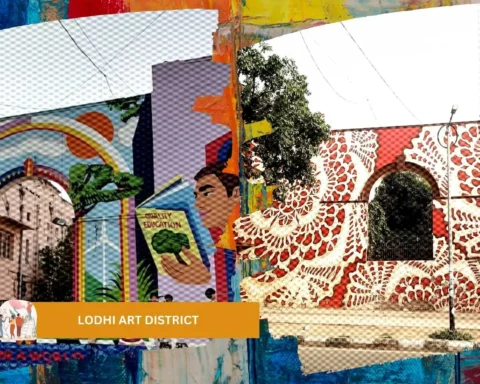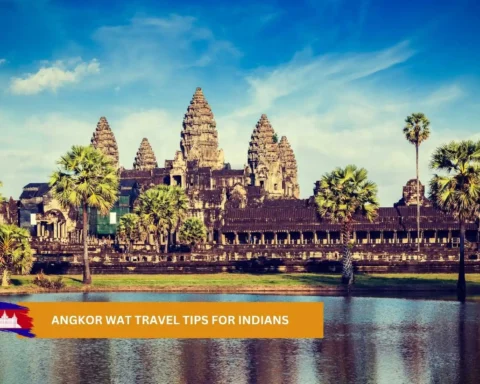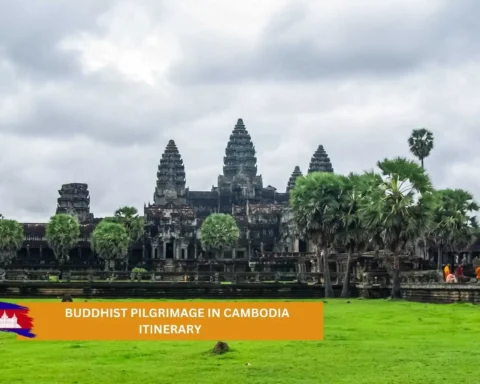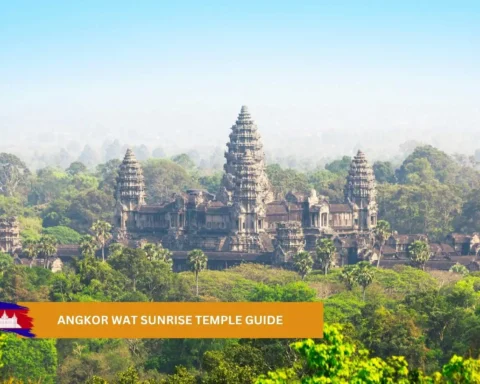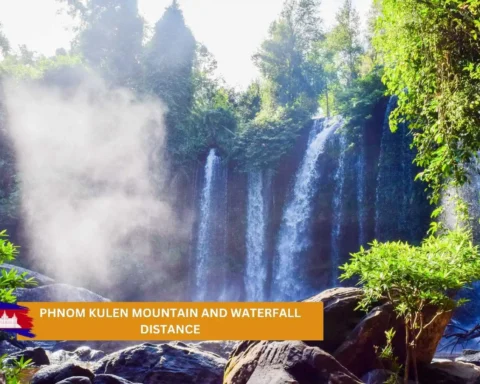Cambodia, a land of ancient temples, forests as vast as the horizon, and a heritage rich with history, is rapidly becoming the ultimate Indian dream destination for adventure and nature lovers alike. One of the most exciting activities Cambodia has in store is jungle trekking, a journey amidst tropical jungles filled with wildlife, secret waterfalls, and deep penetration of culture. Cambodia jungle trekking for Indian travellers is not only about the wild experience of Southeast Asia. It is about venturing into a world where history, nature, and adventure blend into experiences that will last a lifetime.
Table of Contents
The Interest in Cambodia Jungle Trekking for Indian Travellers
Indian tourists increasingly consider Cambodia jungle trekking for its quintessential blend of adventure and cultural exposure. Unlike over-touristed loops of other Southeast Asian countries, Cambodia’s pristine forests and harsh jungle treks offer a synergy of discovery and serenity. The nation’s renowned old temples like Angkor Wat are generally the first attraction, but the secluded ones away from the tourist track cast a spell. Walking in the jungles of Cambodia allows Indian tourists to return to nature and feel the friendliness of the Khmer, thereby making it the perfect retreat for nature enthusiasts and adventure tourists alike.
The variety of terrain, from the mountainous province of Ratanakiri to the tropical Cardamom Mountains, creates uniqueness in each trek. Experienced or not, the jungle trekking trails of Cambodia have something for everyone. The ability to view unconventional wildlife, swim in natural waterfalls, and become educated by local guides on the history and tradition of the Khmer people makes each adventure unique.

Best Places to Go Jungle Trekking in Cambodia
Indian travellers who want the best of Cambodia jungle trekking have certain more popular places. Each place has something unique – mesmerizing nature, rich culture, and adventure.
Virachey National Park
Virachey National Park, far out in the northeast, is Cambodia’s largest park and the abode of nature lovers. Spanning vast landmasses, this forest is full of dense jungle, cloud forest, and a rich diversity of plant and animal life. Walking inside here is an authentic venture into nature, with every trail that winds through rocky terrain, along sparkling waterfalls, and deep into the heart of the jungle. Several ethnic minorities are also park residents, giving visitors a glimpse of traditional Khmer and indigenous lifestyles.
Virachey National Park trekking may be a long, multi-day excursion with local guides and rangers. Through the journey, you can see critically endangered gibbons, macaques, and numerous bird species. The park’s untamed and largely unmapped landscape attracts those who want genuine jungle adventures. The ideal time to visit is during the dry season, with cooler temperatures and easier-to-follow trails.
Cardamom Mountains
The Cardamom Mountains, or Krâvanh Mountains, are Cambodia’s largest and Southeast Asia‘s only remaining great wilderness. The area has unbroken forests, untamed rivers, and vast diversity. Trekking there presents Indian visitors with an opportunity to hike through enormous forests, catch glimpses of rare wildlife, and experience the isolation of remote jungle tracks.
The Cardamom Mountains also have a few ecotourism schemes based on the community, through which people can volunteer to help locals conserve nature while still viewing the natural splendour of the landscape. It is best visited for multi-day treks, river journeys, and wildlife spotting. Trekkers prefer the dry season, as heavy rains would make trails slippery and unsafe to trek through.
Kep National Park
For a less challenging jungle trekking experience, visit Kep National Park. Situated close to the Gulf of Thailand, the park features rolling hills, clearly signed trails, and sweeping panoramas of countryside views. Trekking in Kep National Park is an excellent experience to enjoy the peacefulness of Cambodia’s nature, with chances to see birds, butterflies, and monkeys.
The principal circuit trail is extensive, with brief ones off into the thick jungle. The park is child-friendly and accessible to every fitness level, and as such, an excellent choice for Indian tourists who are bringing children or prefer a lower-key affair. It is conveniently close to the picturesque lake of Yeak Laom and Kep town’s colonial architecture.
Kulen Mountain and Phnom Kulen National Park
Kulen Mountain, or Phnom Kulen, is the holy ground for the Khmer and a trekker’s playground in the jungle. Phnom Kulen National Park, on the mountain, draws adventurers to dense forest, ancient stone carvings, and beautiful waterfalls. Park trails wind through pine forests and between old temples, providing an exotic mix of culture and nature.
Phnom Kulen National Park trekking is a spiritual and physical experience in which one can visit holy sites, meet villagers, and be amazed by spectacular scenery. The region is also renowned for its Khmer roots since it was the origin of the ancient Khmer Empire.
Koh Kong and the Southern Jungles
Koh Kong, the southwestern region of Cambodia, is another top destination for trekking in the jungle. It is famous for its miles of jungle, white sand beaches, and coral reefs teeming with marine life. Koh Kong jungle trekking allows Indian tourists to experience the thrill of the wild jungle, see endangered species, and enjoy unspoiled beaches.
The Cardamom Mountains are conveniently situated here, with incredible scenery accompanying jungle treks. Community-based ecotourism in Koh Kong provides opportunities for tourists to contribute to conservation at the local level while experiencing the area’s natural beauty. The dry season is the best time to visit, as the wet season trails can be dangerous.

Best Time for Cambodia Jungle Trekking
Deciding on the proper time for Cambodia jungle trekking is essential to enjoy and experience a safe trek. The country’s climatic conditions can be categorized into dry and rainy seasons.
The best time for trekking is during the dry season. During these months, the weather is pleasant, the trails are dry and easy to trek on, and there is little risk of leeches and other insects. It’s also peak tourist season to visit Angkor Wat and other old temples, so large crowds at favourite spots should be expected.
It is the wet season with greeneries and fewer visitors, but less trekking is done. Tracks are slippery and muddy, and some places are closed due to floods. But the countryside is prettiest then with the emerald green rice fields and swollen rivers making the landscape breathtaking.
For Indian tourists, the dry season is the optimal time for jungle trekking, particularly if you’re going into isolated areas such as Virachey National Park or the Cardamom Mountains. The wet season is far from uninteresting, with fewer tourist crowds and a lush, green countryside.
Cultural Experiences and Local Life
Cambodian jungle trekking for Indian travellers is not only about nature. It also involves connecting with Khmer people and their cultural heritage. Most trekking routes go through neighbouring villages, which allow tourists to get involved with the host communities, see traditional ways of life, and experience authentic Khmer cuisine.
Treks in Mondulkiri and Ratanakiri provinces tend to stop at Bunong and other ethnic minority villages. The villages have been living a traditional way of life, so visitors can see some of Cambodia’s multicultural heritage, which is rarely observed otherwise. Sharing dinner with a host family, learning to farm the way locals do, and attending a ceremony in a village are some of the experiences one can enjoy.
The Khmer are friendly and welcoming people, and most trekking expeditions provide an opportunity to make a difference in the local community and conservation projects. Through the use of responsible tour operators, Indian tourists can protect Cambodia’s natural and cultural heritage and have an authentic jungle experience in the process.
Wildlife and Nature in Cambodia’s Jungles
Cambodia’s equatorial forests shelter a vast range of fauna and are a haven for wildlife enthusiasts. A trek in Virachey National Park or the Cardamom Mountains allows one to spot endangered gibbons, macaques, hornbills, and other animals.
The country’s extensive forests and natural parks also shelter rare and elusive animals, such as the pygmy slow loris, civet cats, and birds of prey. Night walks are a favourite outing in some parts, with the possibility of observing nocturnal animals in the wild.
Cambodia’s conservation culture can be seen in organizations such as the Wildlife Alliance, which campaigns to preserve Cambodia’s wildlife and forests from hunting and logging. Indian tourists can support such activities positively through ecotourism and responsible trekking with an appreciation of Cambodia’s natural beauty.
Practical Tips for Indian Travellers
Planning a jungle trekking vacation in Cambodia requires some pre-planning to enjoy a safe and pleasant trip. The following are some valuable tips for Indian travellers.
The dry season is best for trekking since the weather and paths are mild. Light-colored, loose garments, proper trekking boots, insect spray, and an umbrella are necessary. Don’t miss a hat, sun cream, and plenty of water. Local guides are also priceless for trekking through the jungle, spotting wildlife, and getting insight into the local culture. They also protect you and ensure you are not lost. Dress modestly when you visit villages or religious sites, and ask permission before taking pictures.
Be aware of local traditions and customs. Use tour operators that help local communities and care for the environment. This serves to preserve Cambodia’s natural and cultural heritage for the future. Take regular breaks, drink water, and listen to your body.
Combining Jungle Trekking with Cultural Exploration
For those interested in Cambodia jungle trekking for Indian travellers, trekking in the jungle may also be paired with sightseeing the country’s legendary old ruins and vibrant cities. Siem Reap, the entry to Angkor Wat, is a good base for the ancient city and the surrounding jungle trekking. A standard plan can involve some morning time early at Angkor Wat and then a trek in the jungle in the afternoon. Other spots one must visit are the Bayon Temple, Banteay Srei, and Beng Mealea, which all represent Cambodia’s glorious past.
The capital city, Phnom Penh, is also a treasure with its colonial buildings, bustling markets, and moving sites. A trip to the Royal Palace, National Museum, or the Tuol Sleng Genocide Museum familiarizes us with the wealth of the nation’s history, including that of the Khmer Rouge.

Conclusion
Cambodia jungle trekking for Indian travellers is not just a vacation. It is an immersion in the heart of Southeast Asia’s wild interior. From Virachey National Park’s jungles to Kulen Mountain’s sacred hills, every trek offers a chance to connect with nature, visit ancient ruins, and experience the culture of the Khmer people.
Whether trekking through the uncharted landscape of the Cardamom Mountains, lazing around the stunning lake of Kep National Park, or indulging in the cultural rituals of nearby villages, Cambodia guarantees an irreplaceable experience for each nature lover. Combining its awe-inspiring landscapes, rich culture, and living heritage, Cambodia is the destination for Indian travellers seeking adventure, discovery, and integration into nature.
Cambodia jungle trekking for Indian tourists is an adventure of discovery, exploration, and bonding. One that will leave you with memories to last an entire lifetime. So grab a backpack, lace up your trekking shoes, and get ready to discover the untamed Southeast Asia.
Discover the essence of Cambodia, from its rich culinary heritage and vibrant culture to awe-inspiring historical landmarks and emerging business landscapes. Explore our Cambodia destination page and uncover the stories, flavors, and opportunities that await.
FAQs
Is Cambodia Good for Indian Tourists?
Cambodia is an excellent destination for Indian visitors, with a fine blend of old temples, cultural experiences, and beautiful nature. Indian travellers enjoy the Khmer people’s hospitality and Cambodia’s affordability. The cultural heritage shared, particularly in the old ruins such as Angkor Wat, also makes Cambodia an appropriate destination for Indians.
Is Cambodia Expensive for Indians?
Cambodia has also proved to be a budget destination for Indians, with inexpensive accommodation, dining out, and travel. Depending on travel philosophy and plan, a week-long trip can cost between ₹30,000 and ₹70,000 per person. Even mid-budget and luxury vacations are within affordable means for most other destinations in the world.
Where in Cambodia are Good Places to Go Hiking?
Top hiking destinations in Cambodia include the Cardamom Mountains, Virachey National Park, Kulen Mountain (Phnom Kulen National Park), Mondulkiri Province, and Kep National Park. These areas offer a range of trails through dense jungles, pine forests, and beautiful landscapes suitable for all experience levels.




